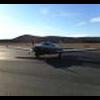Ovation traffic pattern
-
Members Online
- TaildraggerPilot
- PT20J
- Planegary
- Skyland
- Ragsf15e
- Flyler
- Slick Nick
- Mooneydreamr
- jrwilson
- Hank
- TCC
- Jim Peace
- DanM20C
- JRG
- MDMooney
- Steve Tadlock
- andysbasement180
- bucko
- N201MKTurbo
- takair
- druidjaidan
- eman1200
- ElkoRandy20J
- M Terry
- McMooney
- Rwsavory
- Warren
- patriot3300
- EricJ
- mluvara
- spistora
- NickM20F
- MikeOH
- Robbybergh
- IvanP
- Rogerg


Recommended Posts